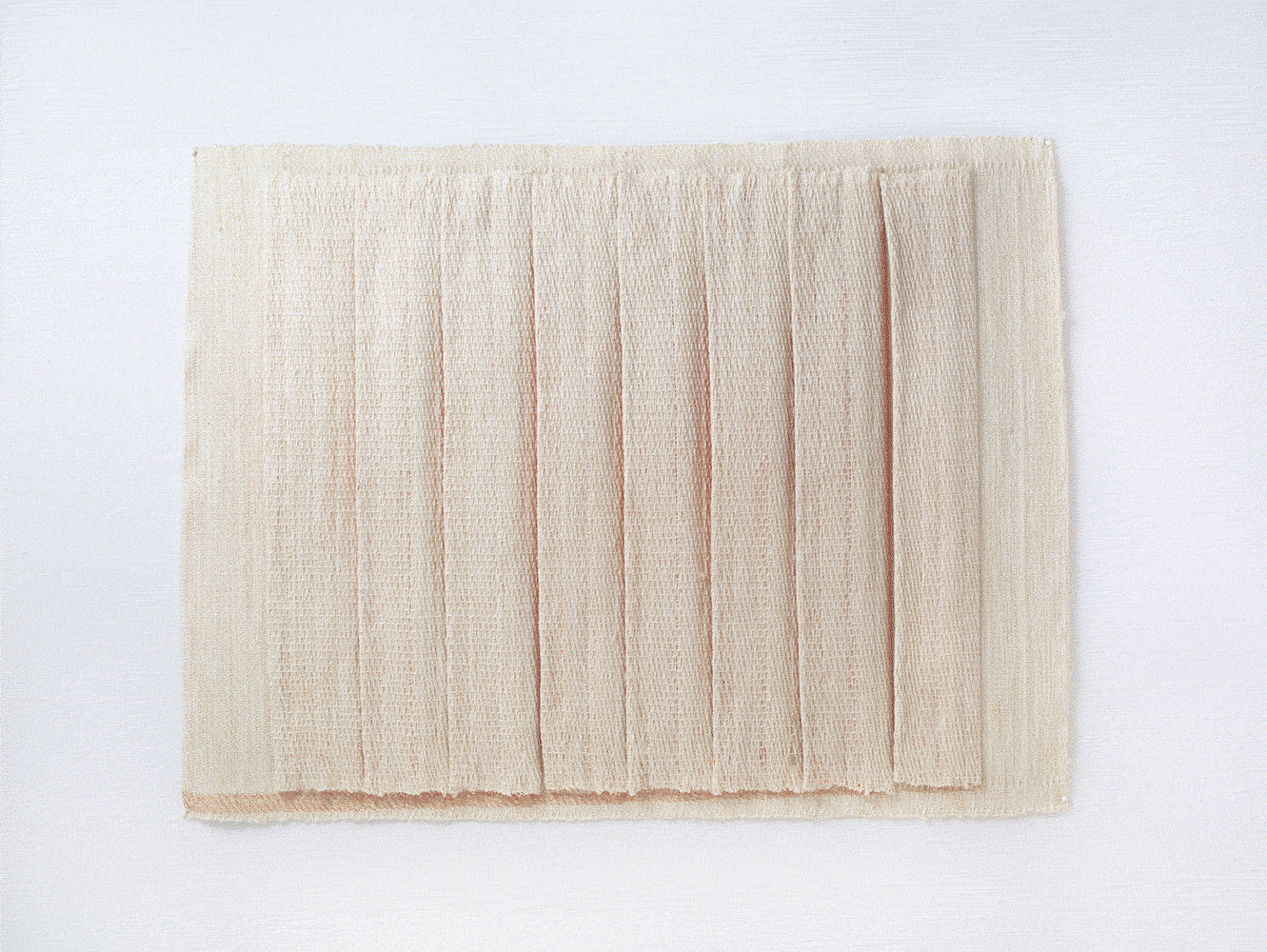
A collaborative interactive projecte led by Elizabeth Meiklejohn as part of the 2023 Experimental Weaving Residency at the Unstable Design Lab at ATLAS, UC Boulder.
By approaching programmable movement as a provocation, this project explored fabric elements capable of oscillating between two states. Collectively, we used our knowledge of weaving, electronics, and programming woven drafts to generate a series of samples that fold, flap, and collapse before arriving at a vision for an interactive textile component. The prompt: reimagine Posch and Kurbak’s 1-bit embroidered controllers within the vernacular of woven structure. The result, an e-textile woven in a single piece that, when removed from the loom, can be cut apart into flaps. When connected to electronics and a custom interface we built to control its motion, the cloth performs gestures. This lets the fabric behave like rustling, flickering and slow rhythmic opening and closing, suggesting a passage of wind or sunlight across the piece bringing it to life.
Each flap is controlled by two electromagnetic coils, one at either side of the flap. A strong neodynium magnet is also integrated into the base structure, directly under the coil when the flap is closed. When the coil is powered, it produced a magnetic field which attracts it to the neodynium magnet. When the wire that forms the coil is connected to power it becomes attracted to a magnet, and thus the flap closes and the cloth appears white. When power is disconnected, the attraction no longer holds and gravity opens the flap, letting light bounce from the flap’s bright orange interior onto the base cloth, creating a warm neon glow – effectively changing the color of the fabric in a large-scale, structural manner.
Through close collaboration and extensive prototyping, we developed weaving strategies in which disparate elements – neutral base, neon flaps, copper coils – are fully integrated into a single-piece fabric on the loom. Designing a woven fabric that not only contains actuators, but lends itself easily to actuation through zones of rigidity and softness, was an equally important part of this process, developing from conversations with engineers and designers in our lab. We centered diagramming and process documentation throughout our collaborative process, maintaining a record of “design bookkeeping” that led us through iterations in coil form-factor, neon color composition and weave structure, finally converging as a color-shifting, actuating woven fabric.
LINKS:
https://unstable.design/2023-residency-in-review/
http://elizabethmeiklejohn.com/